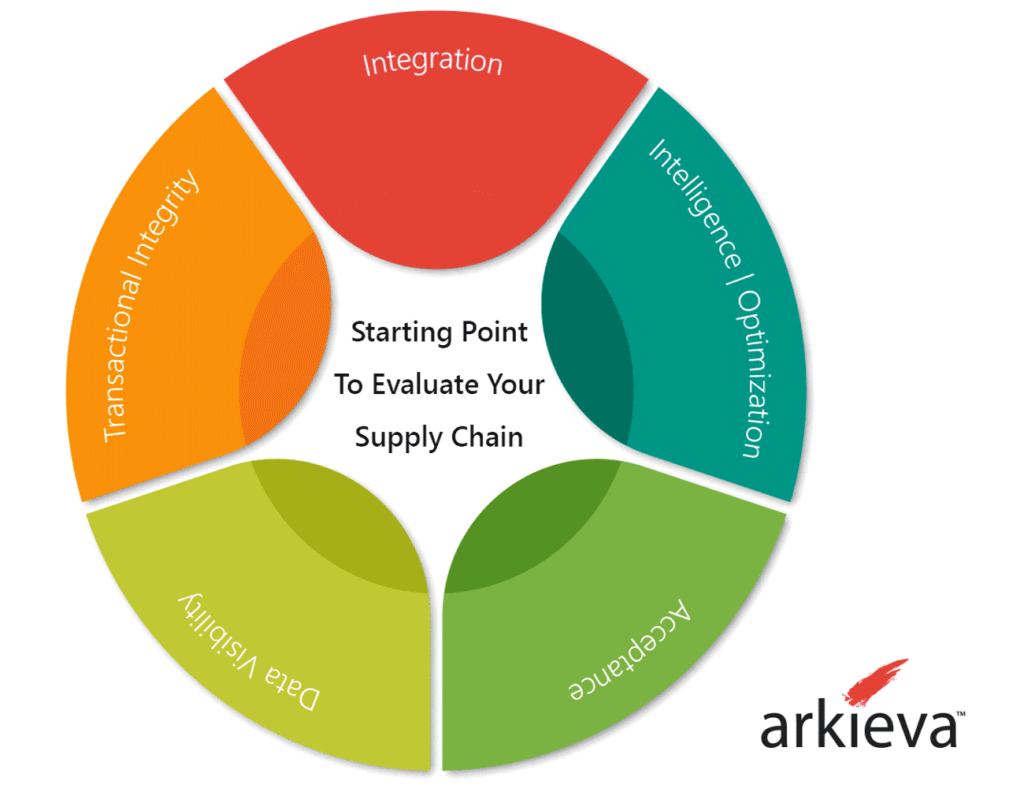Summary
When and how to invest in supply chain management technology is a critical question for all firms that is not a one-time question, but ongoing. Alas, the investment is not trivial which drives the question “what is the business value of this investment”? Two previous blogs have addressed “Making the Case For Supply Chain Technology Investment” and “Survival and Ability to Respond to Emerging Challenges ”. Swifcast provides you the opportunity to perform an ROI evaluation for free. This blog will review the importance of efficiency assessment in this process with a focus on five dimensions: transactional integrity, integration, intelligence/optimization, acceptance, and data visibility.
Introduction
Two previous blogs addressed the question of investing in enhancements to technology to support your supply chain or demand-supply network decisions:
- Can You Make the Case For Supply Chain Technology Investment?
- Survival and Ability to Respond to Emerging Challenges
Before making an investment decision it is important to assess or evaluate the current efficiency of your ability to manage your demand-supply network (DSN). This does not require a massive effort and the best people are aware of pluses and minuses as a body of community intelligence. It can often be done in three weeks. Gerald (Gary) Sullivan, one of the greatest agents of change from 1974 to 1996, insisted on doing this before starting any effort; he priced it a cost. His rationale was if he did it for free, then the organization would not take it seriously. If it were priced too high, it would take too long for approvals. Of course, the question is what and how to assess. The purpose of this blog is to pass along at a high level some of Gary’s approaches which have been proven successful.
Future blogs will touch on when is it time to invest, challenges to a successful investment, write once / read never applications, and improving demand management without improving central planning and ROI.
A starting point for assessing supply chain efficiency.
Supply chain efficiency is primarily determined by the planning and decision-making processes because this affects how well a company can react to changing environments, it determines how well resources are allocated to meet business goals. Planning processes are best assessed and compared to five dimensions: transactional integrity, integration, intelligence/optimization, acceptance, and data visibility.
Transactional integrity: This refers to how well the transactions within the ERP system represent the current state. For example, if the transactions are “batched” (entered once a day or less frequently), the system does not have the same level of integrity as an ERP system where transactions are updated in real-time or near real-time.
Integration: The level of integration within planning processes is determined by looking at the extent of the supply chain that is simultaneously planned. Simultaneous planning of purchasing, transportation, inventory, and manufacturing indicates a high level of integration.
Intelligence/optimization: This refers to whether the planning options are quantified. The greater the depth and breadth of the quantitative framework used for planning, the higher the level of optimization. This does not refer to the use of any specific computational methods.
Acceptance: Acceptance of supply chain planning refers to the extent to which planning processes are institutionalized or standardized.
Data Visibility: This type of assessment refers to the extent to which the data is available and usable by supply chain planners. A high degree of data visibility indicates that schedules, inventory levels, future plans, and costs are readily available and accessible.
The following wheel provides a visual of each assessment area.
Five Key Supply Chain Assessment Areas

Click here to view full graphic
[Read More: How to Perform a Supply Chain Management Assessment]
Conclusion
In the end, depending on the business involved, an assessment may focus on one or two of the areas listed above. It is also essential to note that, some areas of improvement are not mutually exclusive. For instance, you may not be able to achieve your data visibility goals if your systems are not integrated or if you do not have the right data integrity processes in place.





